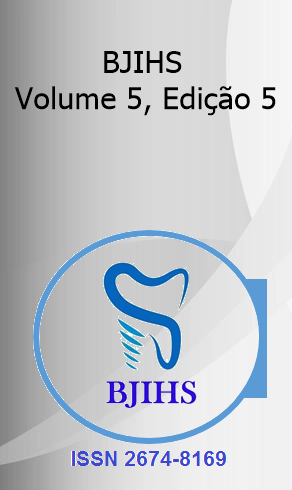Abstract
The objective is to epidemiologically analyze the number of hospitalizations and absolute deaths due to breast neoplasms in Brazil in women from 2010 to 2020. Descriptive and retrospective study on the number of hospitalizations and absolute deaths due to breast neoplasms in Brazil in women in the years 2010 to 2020. The data were obtained by the Information Technology Department of the Brazilian Unified Health System (DATASUS). The variables analyzed were absolute deaths, hospitalizations, race, age group and region. From 2010-2020, 170,010 absolute deaths and 633,204 hospitalizations due to malignant breast neoplasia were recorded in Brazil. The Southeast region had the highest number of hospitalizations, representing 51.32%. As for absolute deaths, the region that listed the most was the Southeast, corresponding to 50.72%. As for race, white was the one with the most absolute deaths and hospitalizations, representing 59.23% and 45.46% of cases, respectively. In relation to the age group, the one with the highest number of hospitalizations was those aged 50 to 59, with 27.87%. In the period analyzed, 170,010 absolute deaths and 633,204 hospitalizations due to malignant breast neoplasia were recorded in women in Brazil. The Southeast region represented more than half of both variables. The white and brown race accounted for the vast majority of absolute deaths and hospitalizations, with the majority being white. As for the age group, the one with the highest number of hospitalizations was those between 50 and 59 years old, however, the one with the highest number of absolute deaths was those over 70 years old. The age group of those under 40 years old recorded the fewest absolute deaths and hospitalizations.
References
BARRIOS, C. H. Global challenges in breast cancer detection and treatment. The Breast, v. 62, n. 1, fev. 2022.
BARZAMAN, K. et al. Breast cancer: Biology, biomarkers, and treatments. International Immunopharmacology, v. 84, n. 106535, p. 106535, jul. 2020.
BHUSHAN, A.; GONSALVES, A.; MENON, J. U. Current State of Breast Cancer Diagnosis, Treatment, and Theranostics. Pharmaceutics, v. 13, n. 5, p. 723, 14 maio 2021.
BIRNBAUM, J. K. et al. Early detection and treatment strategies for breast cancer in low-income and upper middle-income countries: a modelling study. The Lancet Global Health, v. 6, n. 8, p. e885–e893, ago. 2018.
DATASUS – Ministério da Saúde. Disponível em: <https://datasus.saude.gov.br/>. Acesso em: 08 out. 2023.
HARBECK, N. et al. Breast cancer. Nature Reviews Disease Primers, v. 5, n. 1, 23 set. 2019.
KASHYAP, D. et al. Global Increase in Breast Cancer Incidence: Risk Factors and Preventive Measures. BioMed Research International, v. 2022, p. 1–16, 18 abr. 2022.
KATSURA, C. et al. Breast cancer: presentation, investigation and management. British Journal of Hospital Medicine, v. 83, n. 2, p. 1–7, 2 fev. 2022.
ŁUKASIEWICZ, S. et al. Breast Cancer—Epidemiology, Risk Factors, Classification, Prognostic Markers, and Current Treatment Strategies—An Updated Review. Cancers, v. 13, n. 17, p. 4287, 25 ago. 2021.
MEDRONHO, R. Epidemiologia. 2ª edição. São Paulo, 2009.
MOO, T.-A. et al. Overview of Breast Cancer Therapy. PET Clinics, v. 13, n. 3, p. 339–354, jul. 2018.
RIVERA-FRANCO, M. M.; LEON-RODRIGUEZ, E. Delays in Breast Cancer Detection and Treatment in Developing Countries. Breast Cancer: Basic and Clinical Research, v. 12, p. 117822341775267, jan. 2018.
SMOLARZ, B.; NOWAK, A. Z.; ROMANOWICZ, H. Breast Cancer—Epidemiology, Classification, Pathogenesis and Treatment (Review of Literature). Cancers, v. 14, n. 10, p. 2569, 23 maio 2022.
WAKS, A. G.; WINER, E. P. Breast Cancer Treatment. JAMA, v. 321, n. 3, p. 288–300, 22 jan. 2019.
WATKINS, E. J. Overview of breast cancer. Journal of the American Academy of Physician Assistants, v. 32, n. 10, p. 13–17, set. 2019.
WÖCKEL, A. et al. Clinical practice guideline: The screening, diagnosis, treatment, and follow-up of breast cancer. Deutsches Aerzteblatt Online, 4 maio 2018.

This work is licensed under a Creative Commons Attribution 4.0 International License.
Copyright (c) 2023 Fernanda Casini de Souza, Rafael Coelho Franco , Walquiria da Silva Pedra Parreira , Sara Joana Carneiro Ribeiro de Menezes, Giovanni Tavares de Sousa, Andressa Barros Tenório Nunes de Carvalho, Weslley Barbosa Maia, Yaskara Nara Gaspar Alcantara , José Ricardo Baracho dos Santos , Atílio Fontinele Castro de Araújo, Natália Alvarez Teles de Souza , Jayane Paula Carneiro Soares , Bruna Lívia Jorge Leite, Cleidiane Alves de Brito, Vin´ícius Augusto Alves da Silva
